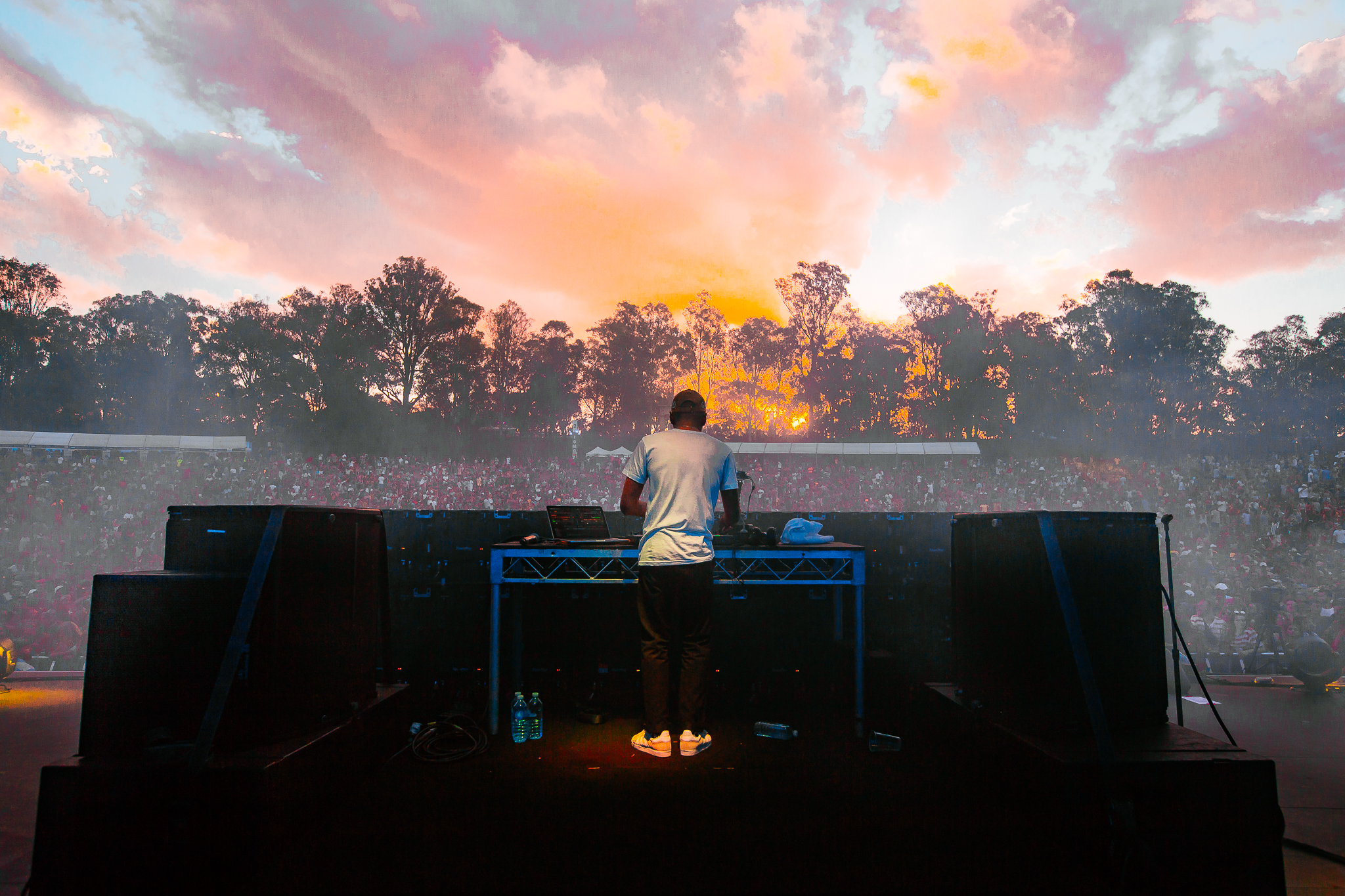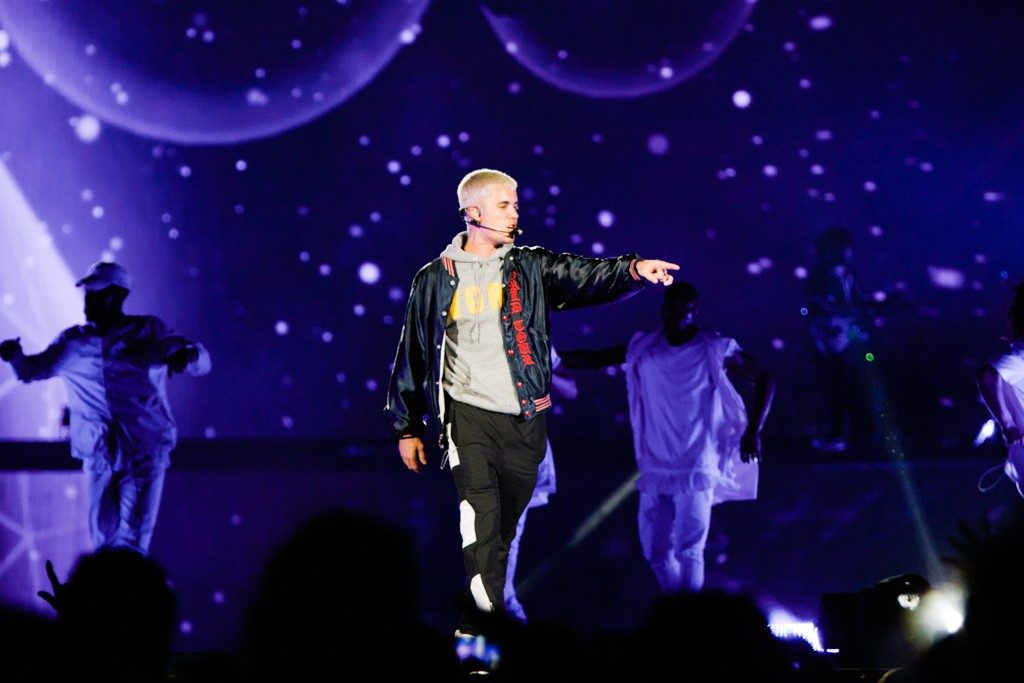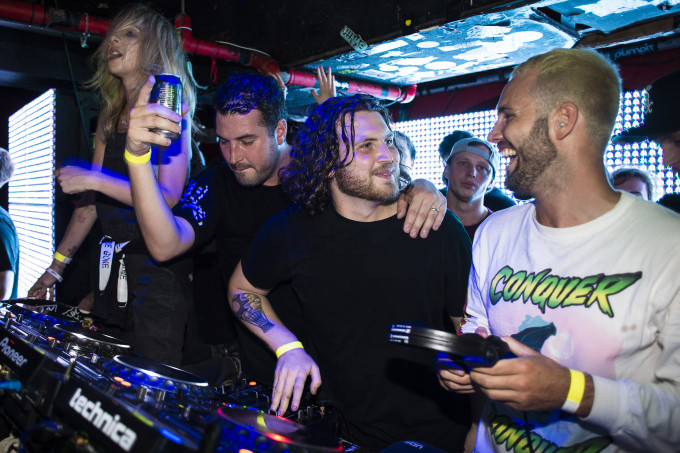“Literally Losing Money”: Why It’s So Hard For Bands To Tour Australia
Geographical isolation, tricky venues and high costs make Australia a tough country to tour.

Last week, Grizzly Bear frontman Ed Droste decided he was fed up.
In a series of now-deleted Instagram posts, the singer vented his frustration about the state of the live music industry, claiming his band was “literally losing money” on its current Australian tour.
“People always ask ‘why aren’t you coming to Perth, Singapore, Quito’..and I’m trying to explain there is no value put on live music anymore,” he wrote. “We feel it’s important to bring with us the fullest show we can with all live instruments and a good light show. But now, when you cut out record sales and we haven’t had a car commercial in ages, we literally lose money.”
“The evolution of the music industry is in my opinion destroying bands that play music mid-tier or lower,” he continued. “Yes pop stars write hits. Yay. They also get branding deals, and corp gigs… but when you are dealing with a dying industry and you actually care about a real live show and you aren’t a star, there’s not much you can do.”
He warned fans to enjoy live music “while it lasts”, and signed off by writing that the music industry is “fucked”.
Droste’s dead right that touring is a tough business, regardless of whether you’re just starting out or a well-established band like Grizzly Bear. When you tally up the price of transportation, equipment, production, crew and accommodation, the total cost of a tour can quickly spiral out of control — especially if you’re not moving as many tickets as you’d like.
The harsh realities of touring cut both ways. Music fans in Australia are constantly battling the “East Coast Curse”, where international acts will only play cities like Brisbane, Melbourne, and Sydney, leaving punters in Adelaide and Perth out in the cold. It’s not that bands don’t want to play there — it’s that these cities are out of reach, both geographically and financially.
Meanwhile, some international acts enjoy a touring career in Australia unlike any other country. As we examined last year, Pink has broken almost every touring record Australia has to offer, and her success here is way beyond what she experiences in the US. It’s not just massive popstars: trap selector RL Grime enjoys greater popularity here than many markets overseas.
Touring here definitely isn’t impossible, but it is difficult — and there a lot of factors specific to Australia that make things tough. So, what are they?
Australia Is A Freaking Huge Country
Let’s start with the obvious one: Australia is a massive country. The sixth largest in the world, in fact.
And it’s not like we’re adequately filling the space: 80 percent of our paltry 25 million person population is clustered on the east coast, mostly in Brisbane, Sydney, and Melbourne. Then there’s a whole lot of nothing until you reach Adelaide (1,370 odd kms from Sydney) and then Perth (4,000 kms from Sydney.) There are sizeable regional centres in between those major cities, but most of them aren’t big enough for an international act to play in.
Compare this to a country like the UK, which is around 31 times smaller than Australia, but has a population of around 65 million people. You could drive the length of the UK in the same time it would take you just to get from Sydney to Brisbane, and you could play shows at plenty of reasonably-sized venues along the way.
In short, Australia’s geography makes it a nightmare for bands to get around. When your travel options to Perth from the east coast are a plane ticket costing $650 for every crew member, or a 41 hour car journey, you can see why many internationals baulk at the idea.
“When your travel options to Perth are: a plane ticket costing $650 for every crew member, or a 41 hour car journey…you can see why many internationals baulk at the idea.”
“If you’re coming from the east coast of America or Canada, and going over to Perth via Sydney, that’s a lot of flying,” the co-founder of touring company BBE, Anand Krishnaswamy, tells Music Junkee. “Does the size of the show and the amount of tickets you’re going to sell justify flying 10 people there and back? That could cost you $10,000 alone in flights.”
It’s only slightly easier for acts from Europe, Anand points out, because you can come via London and Singapore, so Perth is a lot closer.”
Aside from the cost of getting around, there’s also the issue of time.
“A lot of it is time restrictions,” Mushroom and Frontier Touring founder Michael Gudinski, who has brought some of the world’s biggest acts Down Under, says. “Let’s face it, to go to Perth from Melbourne or Sydney is further than going to Auckland. You just can’t be everywhere at once, and I think that’s why a number of acts are just doing a festival and maybe Sydney and Melbourne. It’s just the way it is.”
But there can be an advantage to being so far away: if an artist is prepared to come all the way down there, often they’ll be prepared to stay for a while.
“Promoters in bigger countries, like France, Spain, or Italy, might only get two or three Bruce Springsteen shows,” Gudinski points out. “We’ve been fortunate enough to have him here for three tours, over a month, and we’ve been able to play all different cities over the country.
“A number of acts are prepared to really put the time in. Like Ed Sheeran, like Bruce Springsteen, like the Foo Fighters. The Foo Fighters play every major city when they’re here.”
And Even When Bands Go To Adelaide And Perth, It’s A Tough Sell
Adelaide has had a terrible reputation among promoters and musicians alike for many years, for a simple reason: it’s really hard to sell tickets there.
“We had a saying for many years, ‘Let the trucks go by Adelaide’,” says Gudinski. “It’s historically been a very tumultuous market.”
“For certain acts it can still be strong,” Gudinski adds. “We’ve just done Rise Against, for example. One of the best shows of the whole tour was in Adelaide. I think the economy in different cities varies, and it also depends which the night of the week you’re playing.”

Justin Bieber onstage at Sydney’s ANZ Stadium last year. Photo: Mikki Gomez
Part of the reason is Adelaide doesn’t have a venue large enough to cater for middle and top-tier acts. When it’s set up for live music, the Adelaide Entertainment Centre only has a capacity of around 9,500 — significantly smaller than equivalent venues in other cities. For big acts — those that come with a few trucks’ worth of equipment — this isn’t enough to make a show financially viable.
Then there’s Adelaide Oval, which can fit up to 65,000. But that’s really only an option for the Ed Sheerans and Adeles of the world. Only a handful of global acts could even contemplate filling it.
Perth has been generally been stronger than Adelaide in terms of ticket sales, but it can still fluctuate massively.
“Perth was somewhere that was always very, very strong,” says Gudkinski. “I’m not sure whether it’s because of the mining over there, but the economy has always been strong. But at the moment. Perth seems to be a very tough market, even for things that are working well everywhere else.”
Some Genres Just Don’t Do Well Certain Cities
Back in January, bass festival Touch Bass announced its line-up and dates for 2018. Every major Australian city is set to host the festival at the end of this month — except for Melbourne.
“Bass music in Melbourne is a tough market,” says BBE’s Anand. “For a while now there hasn’t been many weekly club events pushing dubstep or trap music. Whereas in Sydney you have clubs like Chinese Laundry and World Bar that are putting that stuff on on a weekly basis.
“That’s definitely one reason that bass music fails in Melbourne, because there’s not really a chance for kids to go out every single week and hear it and get educated about it. I think there’s a really strong correlation between what is happening at club level and then what can actually sell at a high ticket level as well.”

Alison Wonderland, Hayden James, Golden Features, and What So Not at Sydney’s Candys Apartment last year. Photo credit: Pat Stevenson/Hobogestapo
Bass and trap are particularly strong in Sydney. As noted earlier, RL Grime enjoys a level of popularity in Sydney that he doesn’t see in other Australian cities. On last year’s tour he sold out the Hordern Pavilion (capacity of 5,500) in just nine days. In all other cities he stuck to venues with capacities of 2,000-3,000.
But on the flip side, house and techno are thriving in the Victorian capital: “You can go anywhere in Melbourne and hear amazing deep house and techno,” says Anand. “You’ve got guys like Novel and the Beyond The Valley guys doing crazy, crazy ticketed numbers for house and techno events.”
The other thing that does well in Melbourne is good old fashioned live music.
“Promoting rap and urban shows in Perth is really difficult. Really, really difficult. That’s why you see guys like Drake aren’t going there. Kendrick didn’t go there.”
“They’re a very discerning music crowd in Melbourne, they love real instruments,” says Jess. “They love people singing. They love hip-hop and rap. They’ll come out in insane numbers and sell out those shows in a heartbeat.”
Adelaide and Brisbane are generally seen as being good markets for up-and-coming hip-hop and bass acts. And while Melbourne struggles with bass, Perth’s Achilles heel is hip-hop.
“Promoting rap and urban shows in Perth is really difficult,” Anand admits. “That’s why you see guys like Drake aren’t going there. Kendrick didn’t go there. It’s definitely tricky to do business out there, for sure. People are trying, but it’s hard.”
But just because something’s worked at one point in time doesn’t mean it’s always going to be a safe bet.
“Every single aspect of what we do, every single genre constantly has to be readjusted and re-discussed and reconsidered,” says Jess. “Just because you have success one time with one genre at one venue, it doesn’t mean you can do it again. Literally nothing is a given. We’re always scratching our heads and trying to use it and make sure we’re working as close to being ahead of the curve as we can, but it’s definitely challenging.”
Gudinski agrees: “The market is crowded, I think it goes through its troughs, and I think at the moment we’ve been very fortunate. Ticket prices, right venues, and good bills are very important.”
So, What’s Next?
Jess, Anand and Gudinski all point out that ticket prices are the next battleground for touring. Promoters are constantly battling with scalpers and secondary ticketing services (like ViaGogo), who jack up the prices way beyond their original value.
“It’s something that frustrates artists, because an artist makes a ticket price good value,” says Gudinski. “But I can see why some artists are embracing secondary ticketing; it’s a controversial area because if you’re not going to charge hard, you then don’t want to see those tickets being sold for two or three times the amount — particularly when a show isn’t sold out.”
But if artists and promoters put up their prices to keep scalpers at bay, that can put pressure back on the fans.
“I think the biggest thing is asking kids who have a part-time job to put their money in their pocket every fucking weekend to pay a lot of money for these shows and festivals,” says Anand.
“Kids just don’t have endless funds,” adds Jess. “When you’re talking about high-priced tours and there’s every big urban, hip-hop and pop star coming out to Australia within an 18-month period, on top of all these festivals… people just can’t do it.”
So you need to get people in the door, you need to make money, and you need to keep the scalpers at bay — it’s a headache-inducing balancing act. In the end, promoters and artists are doing their level best to put on as many shows in as many cities as they can.
The rest, they’ll tell you, is up to the fans.
—
Jules LeFevre is Staff Writer for Music Junkee and inthemix. She is on Twitter.
—
Photo credit: Mitch Lowe for FOMO Festival
